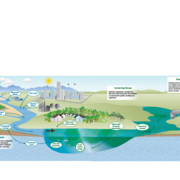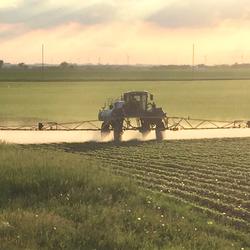Integrated Science Teams
Biologists, ecologists, toxicologists, hydrologists, chemists, and geographers work together in the field and laboratories across the United States
Biologists, ecologists, toxicologists, hydrologists, chemists, and geographers work together in the field and laboratories across the United States
Questions We Answer
Examples of how specialized teams of scientists answer high priority environmental health science questions.
Examples of how specialized teams of scientists answer high priority environmental health science questions.
Featured Science Activities
Science activities are summarized in a series of feature articles
Science activities are summarized in a series of feature articles
Contaminant Biology
Science Centers and scientists supported by Contaminant Biology develop and apply advanced laboratory methods, field investigations, and modeling capabilities to understand toxicity and effects of environmental contaminant and pathogen exposure.
News
GeoHEALTH - USGS Newsletter - Issue September 2025
GeoHEALTH - USGS Newsletter - Issue September 2025
GeoHEALTH - USGS Newsletter - Issue August 2025
GeoHEALTH - USGS Newsletter - Issue August 2025
EESC in the News: PFAS in Blue Catfish
EESC in the News: PFAS in Blue Catfish
Publications
Pathways for potential exposure to onshore oil and gas wastewater: What we need to know to protect human health Pathways for potential exposure to onshore oil and gas wastewater: What we need to know to protect human health
Produced water is a chemically complex waste stream generated during oil and gas development. Roughly four trillion liters were generated onshore in the United States in 2021 (ALL Consulting, 2022, https://www.gwpc.org/wp-content/uploads/2021/09/2021_Produced_Water_Volumes.pdf). Efforts are underway to expand historic uses of produced water to offset freshwater needs in water-stressed...
Anaerobic biodegradation of perfluorooctane sulfonate (PFOS) and microbial community composition in soil amended with a dechlorinating culture and chlorinated solvents Anaerobic biodegradation of perfluorooctane sulfonate (PFOS) and microbial community composition in soil amended with a dechlorinating culture and chlorinated solvents
Perfluorooctane sulfonate (PFOS), one of the most frequently detected per- and polyfluoroalkyl substances (PFAS) occurring in soil, surface water, and groundwater near sites contaminated with aqueous film-forming foam (AFFF), has proven to be recalcitrant to many destructive remedies, including chemical oxidation. We investigated the potential to utilize microbially mediated reduction
Land-use interactions, Oil-Field infrastructure, and natural processes control hydrocarbon and arsenic concentrations in groundwater, Poso Creek Oil Field, California, USA Land-use interactions, Oil-Field infrastructure, and natural processes control hydrocarbon and arsenic concentrations in groundwater, Poso Creek Oil Field, California, USA
Like many hydrocarbon production areas in the U.S., the Poso Creek Oil Field in California includes and is adjacent to other land uses (agricultural and other developed lands) that affect the hydrology and geochemistry of the aquifer overlying and adjacent to oil development. We hypothesize that the distributions of hydrocarbons and arsenic in groundwater in such areas will be controlled...
Science
Tracking Toxins at the Coastline: A National Look at Harmful Algal Toxins in U.S. Coastal Waters
This study is a major step forward in understanding how harmful algal blooms, which are often associated with lakes and rivers, can also affect coastal environments. It provides important baseline information for scientists, public health officials, and environmental managers.
From Stream to Spider: How PFAS Move Through Aquatic and Terrestrial Food Webs
Per- and polyfluoroalkyl substances (PFAS) are persistent synthetic chemicals that accumulate in the environment and living organisms. A USGS study examined how different PFAS compounds move through a stream ecosystem and are transferred from aquatic to terrestrial food webs. The findings documented that not all PFAS behave the same once they enter the environment, leading to differences in...
Bioenergy and Pesticides: Lessons from the AltEn Bioenergy Plant
Ethanol production from seed corn, while reducing waste and promoting renewable energy, can have environmental and health implications. A USGS study on a former bioenergy plant that received pesticide-coated seeds used for ethanol production, revealed that the process led to contaminated wastewater and solid residue, resulting in elevated pesticide levels in nearby surface waters even after the...






